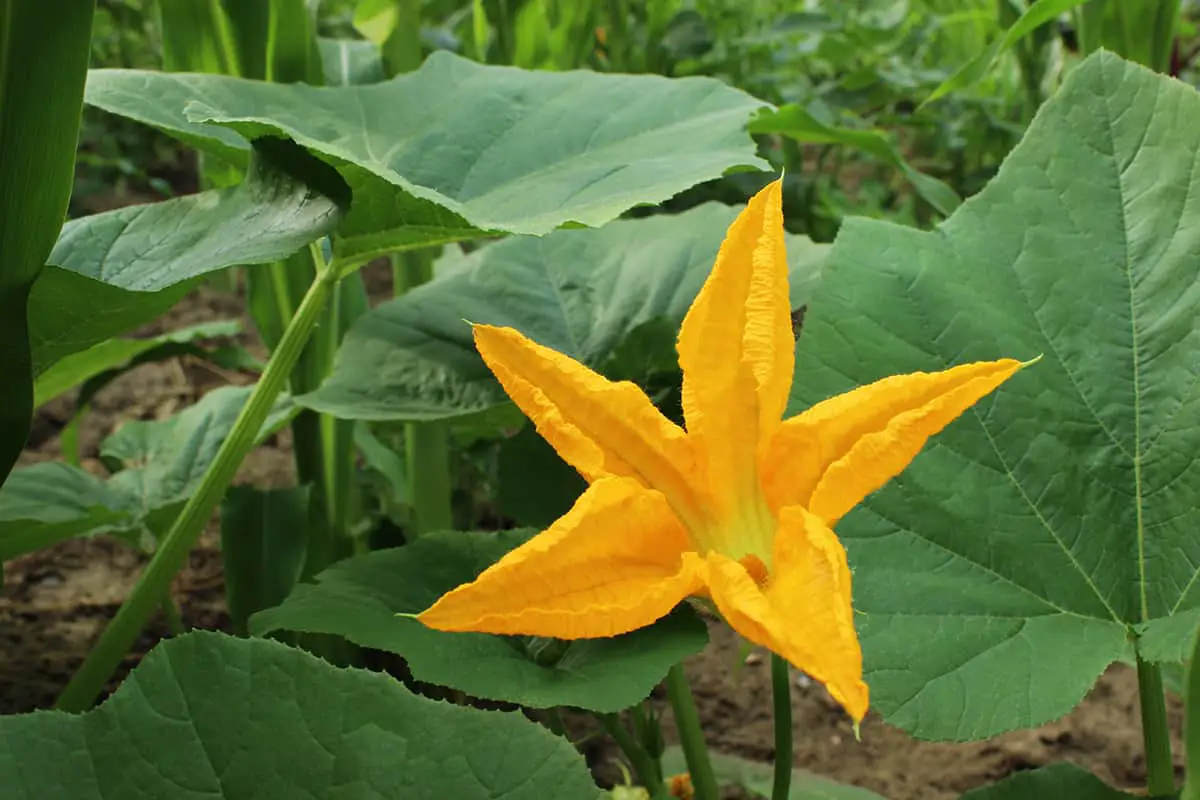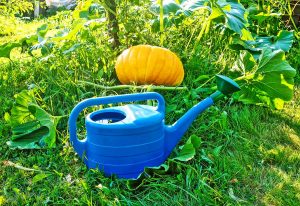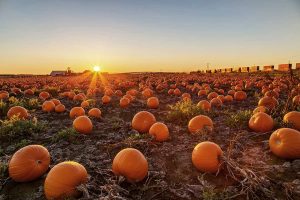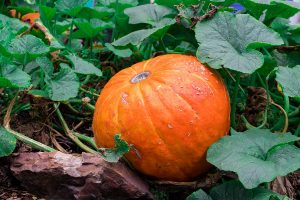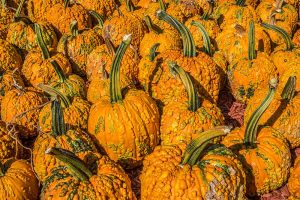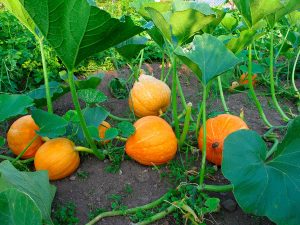Pumpkin plants are popularly grown for their large and impressive fruits that are harvested in early fall, but they can also offer visual interest to the garden through summer with the showy flowers they produce.
Pumpkin flowers are large and shaped like funnels, coming in vivid shades of orange and yellow to contrast against the backdrop of their green leaves. Here we explore the details of pumpkin flowers and reveal answers to some of the most common questions about pumpkin flowers.
Table of Contents
Pumpkin Flower Color
Pumpkin flowers are bright shades of orange or yellow, depending on the variety of the pumpkin plant. The flowers are funnel-shaped, spreading outward at the tips, typically with five points to create a loose star shape. Pumpkin flowers are quite large and showy, measuring around 5 inches in diameter.
They are attractive flowers that add visual appeal to the garden through summer, with a vast number of blooms usually appearing along the vines of healthy pumpkin plants from June right through to the first frost. The bright shade of pumpkin flowers stands out against the green of the vines and foliage, contrasting heavily for a vibrant look.
When Do Pumpkin Flowers Bloom?
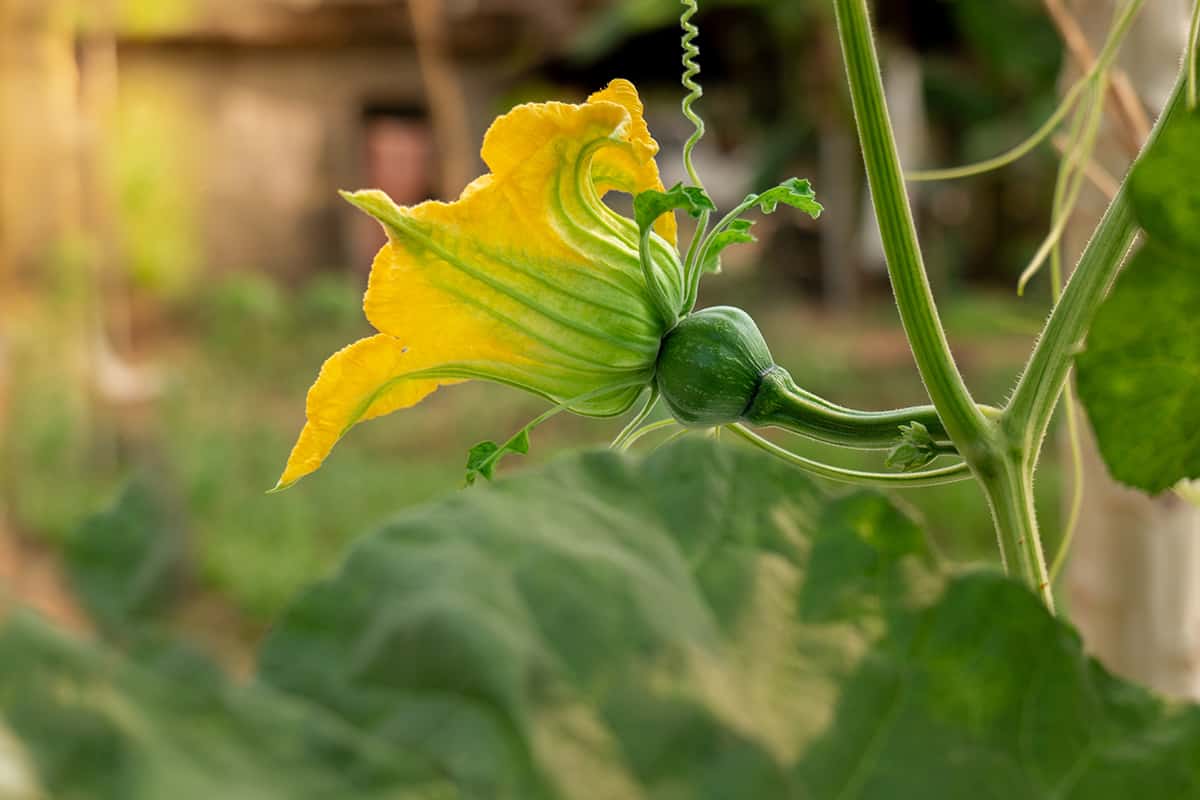
Pumpkin flowers typically start to appear along the vine anywhere from the middle of June to the beginning of July, depending on the climate and when the seeds were planted. The vines can flower heavily all the way through to the first frost, though some of these flowers will instead develop into fruits.
Male flowers will emerge before female flowers appear, with each pumpkin vine producing only male flowers for around the first two weeks of the blooming season.
Do Pumpkin Flowers Turn into Pumpkins?
Female pumpkin flowers can turn into pumpkins as long as they have been successfully pollinated with a male pumpkin flower. The male flowers heavily outnumber the number of female flowers on each vine, with around 80 to 90 percent of flowers on a pumpkin plant being male.
This is because the plant takes more energy to produce the elaborate female flowers and subsequent fruits, and it also gives the female flowers a better chance of being pollinated. It’s fairly common to question whether your vine has produced any female flowers at all, because they open and close so quickly that they are easy to miss.
Typically, a female flower will last for just one day, opening in the morning and closing by the evening. It’s easy to distinguish female flowers from male flowers, since the beginnings of the pumpkin fruit can actually be seen behind the petals of the flower before it is started to properly develop.
Are Pumpkin Flowers Edible?
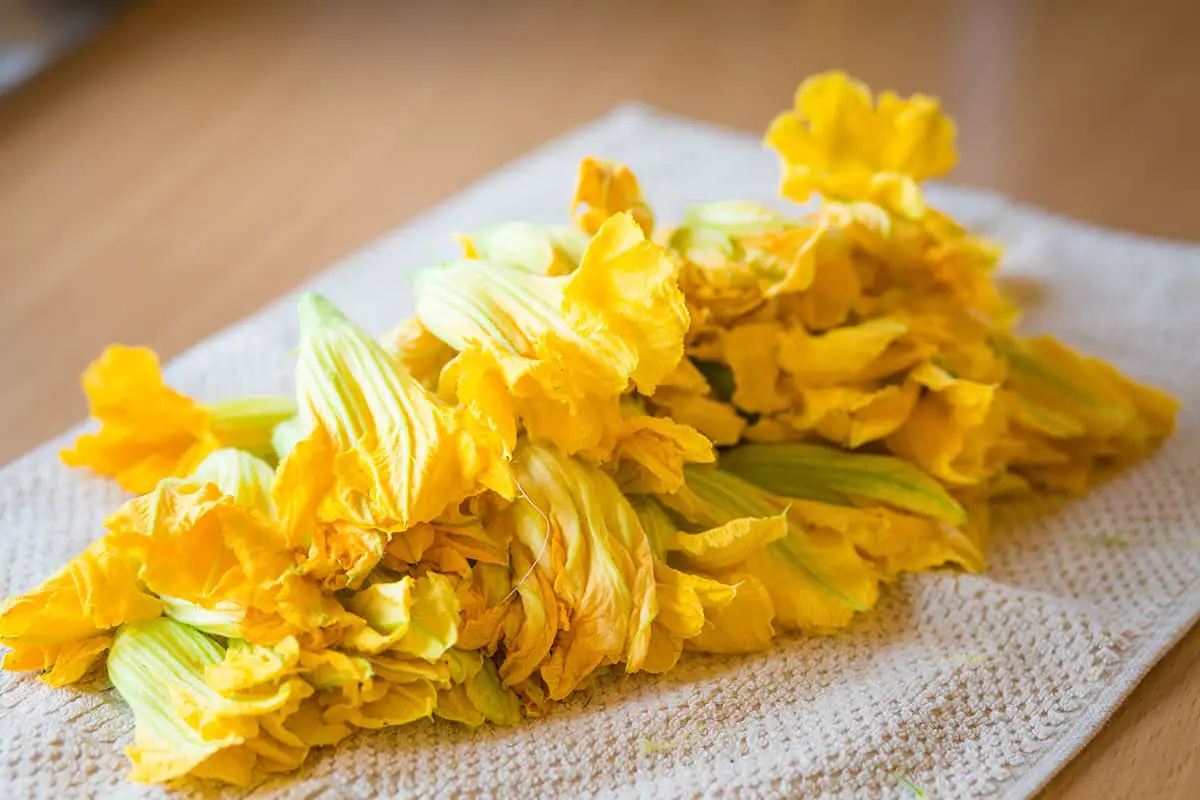
Although pumpkins are more commonly known for the edible flesh of their fruits and their edible seeds, pumpkin flowers are also edible.
The flowers have a mild earthy taste, and they make a great addition to a varied healthy diet since they are low in calories and high in a number of nutrients and antioxidants. You can add raw pumpkin flowers to salads for a pop of color, or they can be boiled down and added to pies, casseroles, or pasta dishes.
What’s the Difference Between Male and Female Pumpkin Flowers?
You can tell the difference between male and female pumpkin flowers with a few telltale signs. The petals of a male and female pumpkin flower look identical, with large funnel-shaped petals in shades of vivid orange and yellow, but the inner components of male and female pumpkin flowers look quite different.
When you get up close to pumpkin flowers, you will notice that some have single stamens extending out of the middle of the flower, and some have a more elaborate central part. It is the male flowers with the single stamen and the female flowers with the more intricate middles.
The other way to differentiate male pumpkin flowers and female pumpkin flowers is to look behind the petals where the flower meets the stalk. In female flowers, you will notice a bulbous green shape which is actually the beginning of a pumpkin fruit. Male flowers, since they do not develop into pumpkins, lack this bulbous part.
Does Light Affect Pumpkin Flower Color?
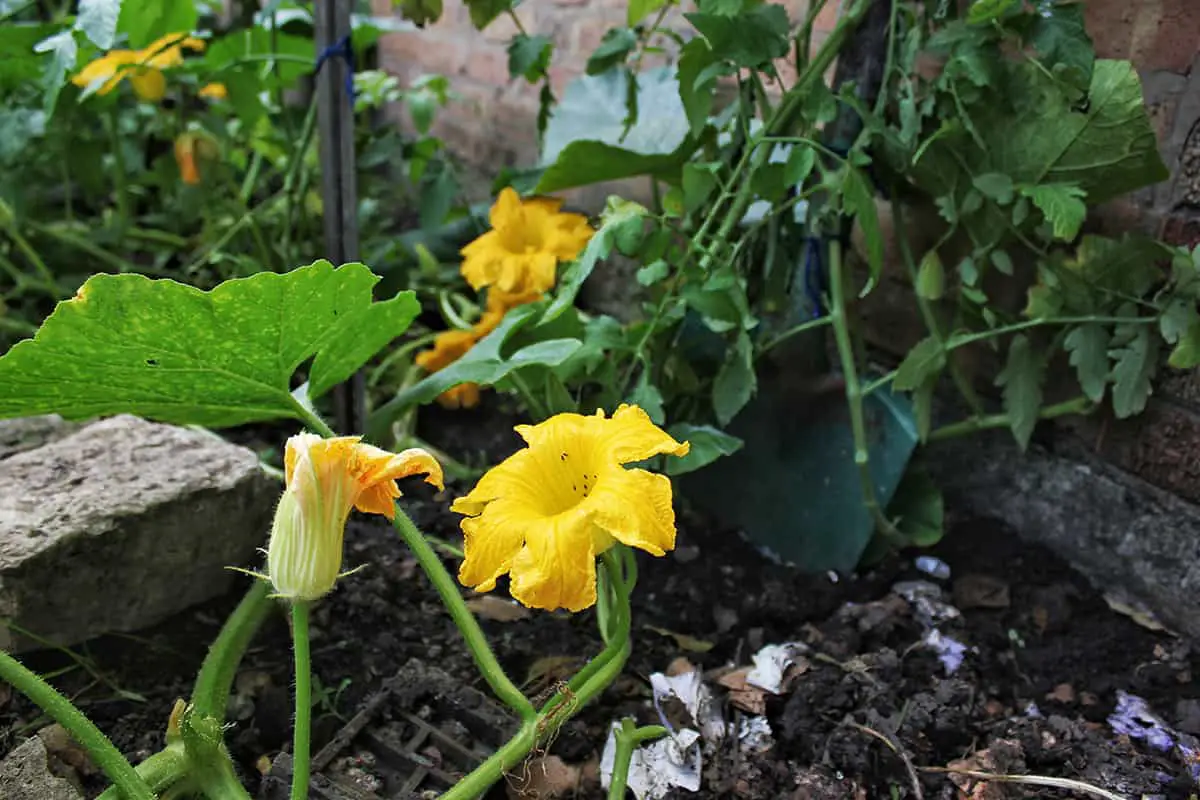
Pumpkin flowers come in vibrant shades of orange and yellow, and although the level of sun they receive will not alter the color of the flowers, it will affect the plant’s ability to bloom. In order to bloom profusely, pumpkin plants need full sun. Without this, blooming will be significantly reduced and your pumpkin vine may produce few flowers.
Not only does this affect the visual display of the plant, but it also decreases the chances of female flowers being pollinated and can lead to a smaller pumpkin harvest. In order to ensure your pumpkin plant produces plenty of flowers, ensure it is grown in an open position away from taller plants or fences that may create shade.
Pumpkin seedlings should be thinned out when young because as they grow bigger they can end up shading each other, which will decrease the amount of flowers produced and subsequently reduce the amound of pumpkins the vine can grow.
Does Heat Affect Pumpkin Flower Color?
The level of heat in your local climate will not affect the color of the flowers a pumpkin plant produces; this will only be impacted by the variety of the vine you are growing. However, heat levels can affect the plant’s ability to bloom and it’s ability to keep flowers alive. Pumpkin plants require consistent warm temperatures for the vines to thrive.
However, if temperatures get too hot, it can stress the plants, which causes the flowers to die. This has been a problem in some areas which have experienced hotter-than-average summers, since the pumpkin flowers have died due to heat before they have been able to grow into pumpkins.
This has dramatically impacted the size of the harvest of pumpkin fruits. Keep your pumpkin plants in daytime temperatures of around 68°F and nighttime temperatures of around 61°F.
